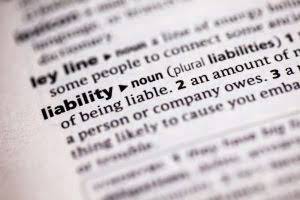Content
- Taxpayers to receive rebates in July
- Gov. Lujan Grisham exempts Social Security income from taxes, delivers first Gross Receipts Tax reduction in 40 years
- What Is an Amended Tax Return?
- Income tax rebates were top tax expenditures in 2022
- How long does it take the IRS to amend your return?
- The Office of Student Financial Aid
- How to Amend a Return
- Support & training
If you owe tax, send the amount to the IRS along with the 1040-X tax form. Like the IRS, states typically use a special form for an amended return. Some states allow you to e-file amended returns while others require that you file a paper return. • You typically must file an amended return within three years from the original filing deadline, or within two years of paying the tax due for that year, if that date is later. Generally, you need to attach any schedule or form relating to the changes you’re making. For example, attach Schedule A if you’re changing an itemized deduction.
How do I lodge an amended tax return?
- log in to the ATO app.
- select View next to Your tax return.
- select View tax return.
- select Amend next to the income year you want to amend.
You should select whichever tax year is more favorable to you. However, the loss must be attributable to a federally declared disaster that occurred in an area warranting public and/or individual assistance. However, if a tax extenders bill is enacted after you file your 2022 tax return, make sure you file an amended return if you qualify for any of the extended tax breaks. The IRS allows you to file an amended return for all open years. An open year usually includes the three years after the due date or filing date or two years after the taxes are paid in full, whichever is later. When a tax return is under audit, the return is considered open, and the issues under audit are eligible for amendment.
Taxpayers to receive rebates in July
You will need to file an Illinois return to get any withholding refunded to you. Curious about when you need to file your state taxes, what the penalties are for filing and paying late, and what it means to file an extension? Read on to find out what the next steps may be for you, depending on where you live and work.
- See the instructions for the form you originally filed (Form IT-201 or Form IT-203) to determine which form to file when amending your return (Form IT-201-X or IT-203-X).
- Gather your original tax return and any new documents needed to prepare your amended return.
- Get unlimited advice, an expert final review and your maximum refund, guaranteed with Live Assisted Basic.
- Examples of mistakes that may need to be corrected can include misreporting earnings and tax credits, the number of dependents claimed, and the filing status.
What if you’ve sent in your income tax return and then discover you made a mistake? You can make things right by filing an amended tax return using Form 1040-X. You can make changes to a tax return to capture a tax break you missed the first time around or to correct an error that might increase your tax.
Gov. Lujan Grisham exempts Social Security income from taxes, delivers first Gross Receipts Tax reduction in 40 years
That’s why the IRS allows taxpayers to correct their tax returns if they discover an error on a return that’s already been filed. Here’s what you need to know about filing an amended tax return. The most common fumble many taxpayers make when they file an amended federal tax return is failing to file an amended state income tax return also, Curtis says. You should use an amended tax return only to correct your filing status, income, deductions, credits or tax liability.
Although there’s no limit to submitting https://turbo-tax.org/s, if you want your refund you should do it as quickly as possible. There is a three-year statute of limitations on issuing refund checks, which is something to keep in mind if you’re claiming additional tax credits. Despite the best tax filing efforts, mistakes can still happen.
What Is an Amended Tax Return?
There’s no need to amend a return for any mathematical or clerical errors. If you prepare your own tax returns, it’s best to fill out both your federal and state returns before actually submitting either one. You might be too busy to do them both at once, so you send in your federal return (which has to be done first) one day, and put off your state return for another https://turbo-tax.org/amended-tax-return/ day. Then, when you’re finally working on your state return, you realize that something you did on your federal return is going to cost you more in state taxes than what it saves you in federal taxes. If that’s the case, it might make sense to amend your federal tax return—and pay a little more in federal taxes—so you can cash in on a larger state tax break.
The IRS can take up to 16 weeks (or 4 months) to process amended returns. In order to claim a tax refund, a tax amendment has to be filed within 3 years you filed the original tax return (including extensions) or within 2 years of the date you paid the tax, whichever is later. After 3 years, you can no longer claim a refund and the money goes to the government.
Income tax rebates were top tax expenditures in 2022
Mistakes happen and they can be easily fixed by amending your return. It doesn’t cost anything to submit an amended tax return yourself, with Form 1040-X. If you’re using a tax preparation service or software, it may charge a fee for an amended return. It’s not uncommon to make a mistake on your federal tax return or leave out important information such as a tax deduction or credit that you’re entitled to. When that happens, the IRS has a process that gives you a second chance. In some cases, a taxpayer may need to file an amended return if the IRS sends them a notice or correction indicating that there was an error on their original return.
That way, you can get ahead of any potential tax liabilities you may owe and minimize penalties. The amended return tool can’t access certain amended returns; refer to our frequently asked questions for more information. The taxpayer must also attach any necessary documents, such as new schedules or forms, to support the changes being made. Generally, the IRS audits only tax returns from the previous three tax years — though there are major exceptions.
The IRS doesn’t require you to claim a tax credit, only income (and expenses when you have self-employment or rental property). The Internal Revenue Service (IRS) form for an amended tax return is Form 1040X and can be filed electronically or through mail. The benefit of filing this form with the IRS is that the taxpayer won’t face a penalty for failing to report income or not paying enough taxes. You can track the status of amended returns for the current year and up to three prior years. It’s nice if amending your return results in a refund, but, unfortunately, that’s not always the case. If you owe the government money as a result of filing an amended return, pay the tax right away to avoid additional IRS interest and penalties.
- You can track the status of amended returns for the current year and up to three prior years.
- GoCardless helps you automate payment collection, cutting down on the amount of admin your team needs to deal with when chasing invoices.
- This includes copies of forms or schedules that you have changed or didn’t include with the original return.
- If that’s the case, you have seven years after your original return’s due date to file the amended return.
- When a tax return is under audit, the return is considered open, and the issues under audit are eligible for amendment.
- Say, for example, you filed a 2021 return in February 2022 and, instead of getting a refund, elected to apply your overpayment against your 2022 tax liability.
If you e-filed your return on eFile.com, the tax app will have already done the math correctly for you and made sure you had the proper forms filled out based on your entries. Complete your amended return as if you are filing the return for the first time. Don’t forget to attach a copy of your amended federal return (Form 1040-X) to your amended state return, if the state requires it, as is usually the case.



